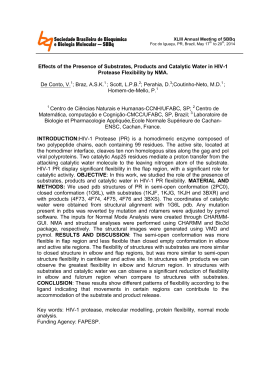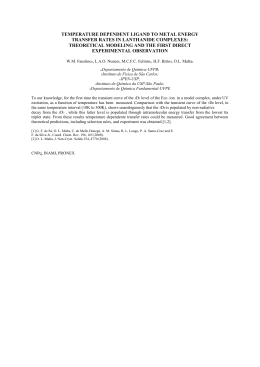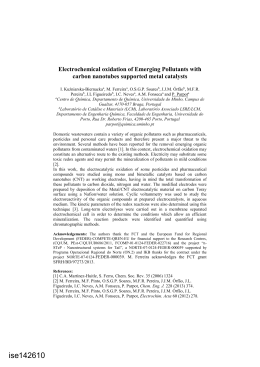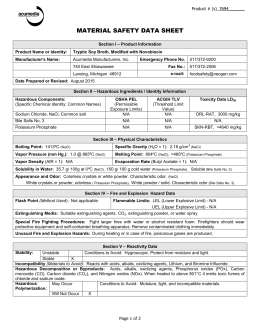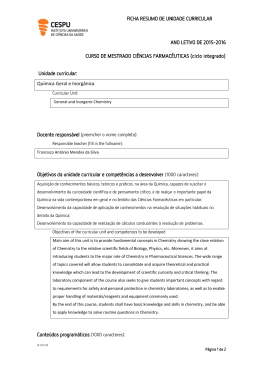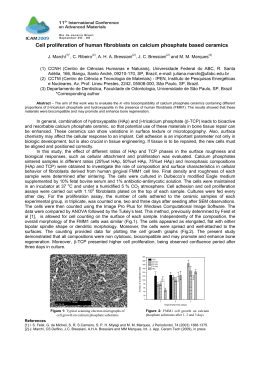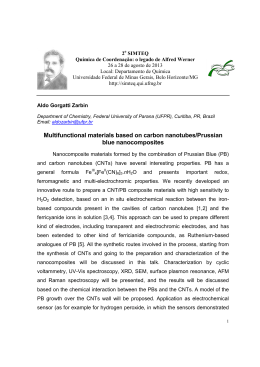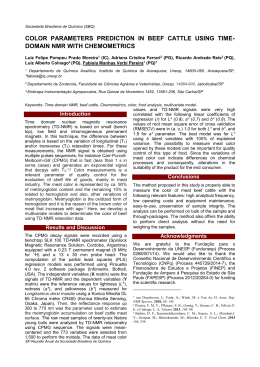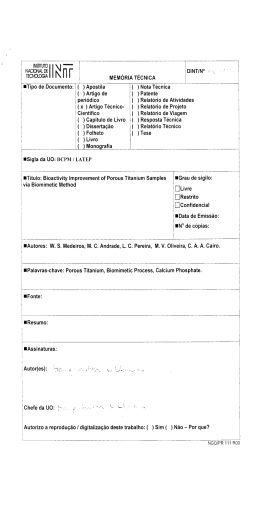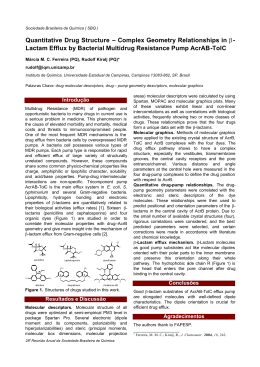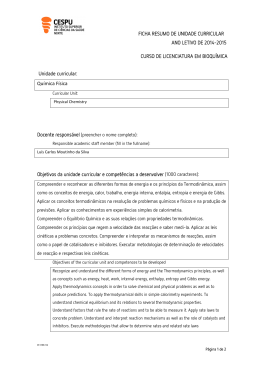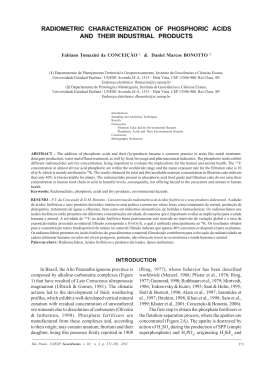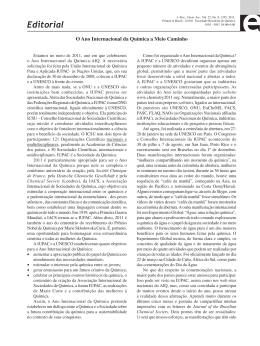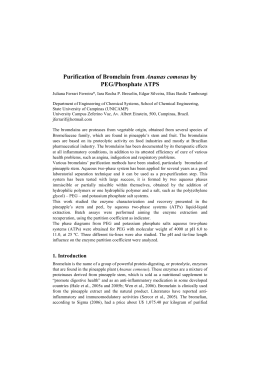XVIII Simpósio Brasileiro de Química Teórica – SBQT 2015 Pirenópolis – GO, 22-25 Novembro de 2015 Multiple Pathways in the Hydrolysis of Phosphate Esters Catalysed by a Synthetic Model of Catechol Oxidase - Catalytic Promiscuity in Biomimetic Systems. Lucas F. Esteves (PG), Hélio F. dos Santos (PQ), Luiz A. S. Costa (PQ) Núcleo de Estudos em Química Computacional (NEQC), Dep. de Química, ICE, Universidade Federal de Juiz de Fora, Juiz de Fora, MG, CEP 36036-900. [email protected] Keywords: Metalloenzymes, Biomimetic Models, DFT, Catalytic Promiscuity INTRODUCTION Metalloenzymes are a broad class of enzymes which contains essential metal ions. Mimetic models for the active site of metalloenzymes have been designed in the last years to mimic the structure of the active site, using ligands similar to those in the real systems. Two examples related to the present work are: (i) the synthesis of di-copper complexes which mimic the catalytic activity of type-3 copper enzymes (catechol oxidase) 1, and (ii) several model complexes to mimic the catalytic activity of purple acid phosphatase2. In this work a study of the hydrolytic cleavage of a model substrate for biological phosphate ester [bis-(2,4-dinitrophenil)phosphate, (BDNPP)] by a mimetic model of catechol oxidase (catalytic promiscuity) was conducted comparing the possible paths for this cleavage. The chemical process which is under investigation is presented on Figure 1. CH3 N O2 N P O O O2 N O N CuII CuII NH NH O NH HN H O- O NO2 O2 N (BDNPP) bis-2,4-dinitrophenil-phosphate O- O O2N P O O- OH O2N + O2 N NO2 (DNPP) 2,4-dinitrophenil-phosphate (DNP) 2,4-dinitrophenolate Figure 1. Cleavage of BDNPP by a mimetic model of cathecol oxidase. METHODS All the transition states were optimized in gas phase at the B3LYP/6-31G(d)/LANL2DZ level and characterized as a saddle point in the PES by having a single imaginary frequency. Reaction intermediates were obtained through IRC calculations at the same level and the solvent effect were evaluated within the PCM model. RESULTS AND DISCUSSION The mechanism by which phosphate esters are hydrolytically cleaved is still an open question in chemistry, due to large number of possibilities for this cleavage. This work presents three transition states (TS) for the first step of the reaction, which are showed on Figure 2 together with some important bond lengths and the values for the single imaginary frequency. Figure 2. Optimized structures for TS-1. The stabilities for the obtained structures related to the reaction intermediate obtained from the IRC calculation are very different for each structure, being the TS-1 (Fig. 2a) the most stable. In the TS-1(PT) (Fig. 2b), the phosphate ester cleavage occurs by a different mechanism, involving a proton transfer reaction during the nucleophilic attack. The TS-1(inv-NO2) (Fig. 2c) differs from TS-1 in the position of the DNP group. CONCLUSIONS This work describes different mechanisms in the cleavage of phosphate ester reaction catalyzed by mimetic models. It is the first attempt to describe, theoretically, the catalytic promiscuity in biomimetic systems. ACKNOWLEDGMENTS FAPEMIG, CAPES, CNPQ, RQ-MG and UFJF. 1 Selmeczi, K. et al. Coordination Chemistry Reviews, 245, 191-201, (2003). 2 Desbouis, D.et al. Coordination Chemistry Reviews, 256, 897-937, (2012). 3 Rey, N. A. et al. International Journal of Quantum Chemistry, 10, 1432-1442, (2010).
Download
